- Home
- Robert A. Heinlein
Man Who Sold the Moon / Orphans of the Sky
Man Who Sold the Moon / Orphans of the Sky Read online
Two classic Robert A. Heinlein novels in one volume, with an all-new introduction by Mark L. Van Name, author of the Jon and Lobo military SF series.
The Man Who Sold the Moon: D. D. Harriman is a billionaire with a dream: the dream of space for all mankind. The method? Anything that works. Maybe, in fact, Harriman goes too far. But he will give us the stars…
Orphans of the Sky: Hugh had been taught that, according to the ancient sacred writings, the Ship was on a voyage to faraway Centaurus. But he also understood that this must be allegory for a voyage to spiritual perfection. After all, the real world was only metal corridors and nothing else, right? And then Hugh begins to suspect the truth. . .
Two all-time classics from seven-time Hugo winner and Dean of Science Fiction, Robert A. Heinlein.
THE MAN WHO SOLD THE MOON AND ORPHANS OF THE SKY
This is a work of fiction. All the characters and events portrayed in this book
are fictional, and any resemblance to real people or incidents is purely coincidental.
The Man Who Sold the Moon © 1950, 1977 by Robert A. Heinlein, © 2003 by The Robert A. and Virginia Heinlein Prize Trust
Orphans of the Sky copyright © 1963 by Robert A. Heinlein, © 1988 by The Robert A. and Virginia Heinlein Library Foundation
Introduction copyright © 2013 by William A. Patterson.
Afterword copyright © 2013 by Mark L. Van Name.
All rights reserved, including the right to reproduce this book or portions thereof in any form.
A Baen Book
Baen Publishing Enterprises
P.O. Box 1403
Riverdale, NY 10471
www.baen.com
ISBN: 978-1-4516-3922-3
Cover art by Bob Eggleton
First Baen printing, September 2013
Distributed by Simon & Schuster
1230 Avenue of the Americas
New York, NY 10020
Library of Congress Cataloging-in-Publication Data
Heinlein, Robert A. (Robert Anson), 1907-1988.
[Novels. Selections.]
Man who sold the moon and Orphans of the sky / Robert A. Heinlein.
pages cm.
Includes bibliographical references and index.
ISBN 978-1-4516-3922-3 (pbk.)
1. Science fiction, American. I. Heinlein, Robert A. (Robert Anson), 1907-1988. Man Who Sold the Moon. II. Title.
PS3515.E288M37 2013
813'.54--dc23
2013025463
Printed in the United States of America
10 9 8 7 6 5 4 3 2 1
Baen Books by
Robert A. Heinlein
Assignment in Eternity
Beyond This Horizon
Between Planets
Farmer in the Sky
Farnham’s Freehold
The Green Hills of Earth
The Green Hills of Earth & The Menace from Earth (omnibus)
The Man Who Sold the Moon
The Man Who Sold the Moon & Orphans of the Sky (omnibus)
The Menace from Earth
Orphans of the Sky
Revolt in 2100 & Methuselah’s Children
Expanded Universe
The Rolling Stones
The Puppet Masters
Sixth Column
Starman Jones
The Star Beast
Introduction
William H. Patterson, Jr.
The stories that make up The Man Who Sold the Moon were among the first Heinlein wrote. Both “Life-Line” (his Opus 2) and “‘Let There Be Light’” (Opus 4) nominally took place when they were written, in April and May of 1939. It was not at first obvious to others that they belonged to a “history of the future,” but they were all—plus many more—on a handwritten wall chart Heinlein kept by his writing desk and typewriter, scribbling ideas on the chart in pencil as they came to him. Some of the stories simply gave a view of the future-historical timeline as it developed; others showed “inflexion points,” where a new invention or social force changed the direction of the development. The Martin-Douglas Sun-Power screens of “‘Let There Be Light,’” for example, enabled all the other technological innovations that were to come.
Heinlein had mined the idea of an extended development from the backstory of his unsold Opus 1 utopian novel, For Us, the Living. He planned out an extended story arc of how we could get from the misery of the Great Depression to a great human civilization spreading through space and meeting man’s future head on.
We might never have known about this Future History except for an ordinary kink in the career path of a professional writer: in the spring of 1939 Heinlein was writing all sorts of short (and not so short) fiction. All of them went first to John W. Campbell, Jr., for Astounding or for its sister magazine, Unknown—but the only stories that piqued Campbell’s interest were the stories coming out of the utopian backstory. He passed up half a dozen of the others but purchased “Life-Line,” then “Misfit” after a few revisions; “‘If this Goes On—’” and “Requiem” and “Coventry” he purchased on sight. And then “Magic, Inc.” broke the string of non-Future-History rejections—followed by still more of the chart stories.
Heinlein visited Campbell in New York in June 1940 and told Campbell about his wall chart and his master plan for a history of the future. Campbell was wild to publish the chart, and it appeared in the May 1941 issue of Astounding, along with “Solution Unsatisfactory” (Opus 21) and the new Future History story, “Universe” (Opus 22)—the first half of Orphans of the Sky.
Heinlein’s first plan for the Future History—the one he typed up for John Campbell to publish in the May 1941 Astounding—went from “Life-Line” and “‘Let There Be Light,’” both of which nominally took place in 1939, the year they were written, to the prolog to “Universe,” not quite two hundred years later.
The two stories of “Universe” and “Common Sense” take place quite some time after the prolog, so they were in the most literal sense “off the chart.” They had been conceived together as a single long story, of about 50,000 words (a proper size for a pulp serial) but Campbell had a backlog of long fiction, so Heinlein and wrote the shorter half, “Universe,” as a 17,000 word novelette in May of 1941 Astounding, but did not write the longer end half as a novella for seven months, when Campbell had a 23,000 word hole in his publishing schedule. “Common Sense” was published in October 1941, and the Future History was more or less complete.
In 1948 Heinlein received a proposal for a book series that would contain the whole of the Future History and for which he would be able to finish the stories on his chart that he had not found opportunity to write, and the Future History series was launched again in 1950. But the publisher’s business methods ran the company into the ground a few years later and only three of the collections were issued—The Man Who Sold the Moon, The Green Hills of Earth and Other Stories (1951), and Revolt in 2100 (1953). Heinlein included in that last collection an apologia “Concerning Stories Not Written,” about the novellas he did not write. He gave several reasons for the gaps he left in the Future History, all of them probably true—certainly Nehemiah Scudder was an unlikeable character—but leaving out what was almost certainly the main reason he did not write those long stories after the first one: “The Man Who Sold the Moon” (which was awarded a Retro-Hugo in 2001) was in great demand for reprints, but the contract restricted it to the publisher’s use for years. Heinlein lost thousands of 1950’s dollars in secondary sales and concluded that writing for this publisher was not worth the trouble.
Another publisher brought out Methuselah’s Children in 1958. The fifth book never came about—bu
t in 1963 the British publisher Gollancz put “Universe” and “Common Sense” together as Orphans of the Sky. “Universe” and “Common Sense” together explore some themes that seem a little disconnected from the mainstream of the Future History—but, then again, the Future History itself was reshaped by the series of “Luna City” stories Heinlein wrote for the Saturday Evening Post (and other “slicks”) six years later, after World War II.
In “Universe,” the voyagers of a generation starship, hundreds of years after a shipboard revolt, have fallen into a dark age and have even forgotten that they are on board a ship at all. Their intellectual universe is bounded by the steel of the ship, and into this dark age comes the first gleam of a universe beyond.
“Universe” challenges our acceptance of the circumstances we encounter as “normal” and might also be read as an extended gloss on one of Heinlein’s favorite quotations, from George Bernard Shaw’s Caesar and Cleopatra: “Pardon him, Theodotus: he is a barbarian, and thinks that the customs of his tribe and island are the laws of nature.”
“Common Sense” makes a specifically political conflict out of this material and poses the conflict of truth against the orthodoxy of social opinion—the “common sense” that is insane (surely a notion that has exceptional currency in the early years of the 21st Century!). Until Time Enough for Love, written in 1972, this was Heinlein’s last word on the Future History.
The book you have in your hands, therefore, is Robert Heinlein’s original conception of the beginning and the end of the Future History—more or less: the earliest stories in The Man Who Sold the Moon took place in Heinlein’s here-and-now of 1939; but the events of “Universe” and “Common Sense” took place in the undiscovered country of the far future—thematically as well as chronologically “off the chart.”
The
Man Who
Sold the
Moon
To Ginny
Introduction
John W. Campbell, Jr.
Every editor is always pleased to hear from one of his regular, good authors. Being as human as his readers, he, too, tends to read first stories arriving from known authors; in reading a magazine, most people do the same thing—read first the stories by the authors they know and like. But the editor’s real pleasure comes when, from that pile of manuscripts from unknowns—technically known as the “slush pile”—a manuscript of real impact and value appears.
Bob Heinlein, completely unknown, sent in a yarn called “Life-Line”—and gave me that pleasure. You’ll read it yourself in this book—but you won’t have the pleasure I did, because you know beforehand that it’s a good story, or it wouldn’t be here.
When such a new star appears, the editor’s next worry and wonder is “Can he repeat—or is he another one-shot?” There are a lot of men who have one good story; having told it, they lapse dismally back into mediocrity. Heinlein, however, was no one-shot, he never did repeat—he progressed. Many of the readers of this book are old-time science-fictioneers, many are newcomers to the field. To the old timers, some realization of Heinlein’s achievement has already come. To the newcomers, reading these stories, the quality of workmanship displayed conceals itself. A really good acrobat makes all his feats seem easy, natural, graceful movements—his technique is so smoothly flawless that the audience never fully appreciates the near-impossibility of the act. Similarly, once a master workman has shown how to handle a problem in story technique, the answer seems so easy, natural and simple that the actuality of a major literary invention is completely missed.
This is the first volume of the Future History series; it is worthwhile here to consider the problem of science-fiction presentation, and point out the easily overlooked neatness of Heinlein’s solutions. For Heinlein was one of the major molders of the science-fiction medium.
First, science-fiction is an extremely difficult medium in which to produce good work—really good work. In the story of here-and-now, the author starts with the reader already coached on the background. The author need only say “New York City,” and the reader has a sort of mental vision montage of skyscrapers, Broadway theaters, East Side slums and millions of people. If the author mentions “taxi,” a very real mental image of a taxicab is called to mind in the reader’s memory.
But if the science-fiction author says “Luna City”—there is no mental image whatsoever, save a very vague association with the full moon riding in a night sky, as seen from Earth. If the author has laid his scene a century hence, and mentions a taxiplane—no mental image results. Helicopter? Antigravity mechanism? Some sort of repulsion beams? Rocket-type drive? Atomic engine, or gasoline powered? Nothing—no image, no conception of the limitations, abilities, or characteristics.
This sort of problem isn’t limited to those two things, of course; the entire background against which the story is to be acted out is completely unknown to the reader. Where a here-and-now short-story writer need only develop his characters, the reader supplying in full detail the background, the science-fiction short-story writer must first supply background, and then character before he can tell his story.
The Romans had human slavery; the Middle Ages called it serfdom. And neither bore any marked resemblance to Colonial America’s institution of slavery. Here, in a period of some 2000 years, there has been a vast alteration in the social pattern that we can all understand. In India we have the caste system, and the Untouchables. In China, one of the supreme disgraces is to have someone commit suicide on your doorstep.
True, human nature doesn’t change over the years—but human nature is a reaction to group mores and the cultural pattern. Those do change, and change drastically. The people of one South Pacific island hold in highest esteem the man who can lie, cheat, murder, steal and blackmail most successfully. The basic of human nature is to win and hold the admiration of friends in the group; if murder, dishonesty and blackmail are held to be virtues—the motivations of a man are different.
Cultural patterns change; one of the things Heinlein “invented,” was the use of that fact. But to do so, it was necessary to invent a technique that would permit an author, in the course of a story, to build up not only characters, but also to give the reader an understanding of the cultural pattern, since the characters must react in normal, human-nature fashion, to that pattern, not on the basis of our cultural pattern.
H. G. Wells did something of the sort in some of his novels. But Wells’ method was to spend two chapters or so describing, for the reader, the cultural pattern he wanted to operate against. In the leisurely ’90s and early twentieth century, that was permissible. The reader accepted it. Long descriptive passages were common. But the development of literary techniques in the last third of a century has changed that; stage techniques, where long character-descriptions are ruled out, have moved into the novel field. Today, the reader won’t stand for pages of description of what the author thinks the character is like; let the character act, and show his character.
That’s not too tough an assignment—provided the author and reader are talking about characters against a mutually understood cultural background. But in science-fiction, the problem is a dilly. Briefly stated, the science-fiction author must put over to the reader (1), the mores and patterns of the cultural background, (2), interwoven with that—stemming from it, and in turn forcing it into existence—the technological background and then, finally, the characters. He may not use long descriptive passages for any of this necessary material.
The cross-influence of cultural patterns and mores on technological background is one of the prime fields of exploration for science-fiction. The invention of the cotton gin made unnecessary the slave-labor engaged in separating cotton from the seeds—but so cheapened and increased the demand for cotton that more slaves were needed for the field work. Had an efficient mechanical cotton-picker and weed-killer, like those available today, been invented in 1850, the institution of slavery would have been uneconomic, and an entirely different cultural pattern wou
ld have grown up in the South.
So long as hand tools were the only way of manufacturing, the corporation and the labor union alike were impossible. When technology advanced to the point of developing a half-million dollar machine for producing a ten-cent article, both became necessary. This interaction of technology and social pattern works both ways, of course. The invention of the machine to produce zippers is dependent on the social custom of wearing complex clothing.
This complexity of interaction of technology and social custom must then be added to the third factor: the reaction of human nature to the resultant mixture. There is the true field of science-fiction—and the difficulty of handling the problem, the near impossibility of doing it well, becomes evident.
Heinlein was one of the first to develop techniques of story-telling that do it. Like the highly skilled acrobat, he makes his feats seem the natural, easy, simple way—but after you’ve finished and enjoyed one of his stories—“The Roads Must Roll” for example—notice how much of the cultural-technological pattern he has put over, without impressing you, at any point, with a two-minute lecture on the pattern of the time. It’s a fine action yarn—with an almost incredible mass of discussion somehow slipped in between without interrupting the flow of action.
Finally, Heinlein was one of the first to build up the description of cultural background to its logical point. He developed a carefully mapped out “history of the future,” a succession of events which serve as the great, broad background against which these stories are laid. For the casual reader of the magazine, each story is complete in itself. But for the regular reader, the individual stories added up one by one into an even larger, even stronger structure.

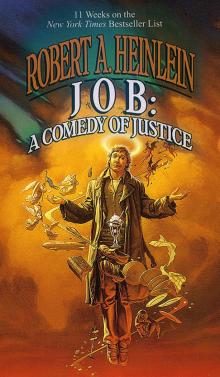 Job: A Comedy of Justice
Job: A Comedy of Justice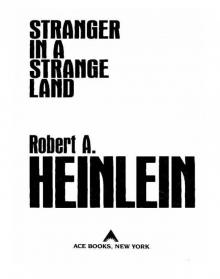 Stranger in a Strange Land
Stranger in a Strange Land The Worlds Of Robert A Heinlein
The Worlds Of Robert A Heinlein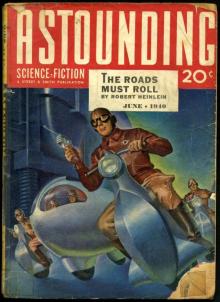 The Roads Must Roll
The Roads Must Roll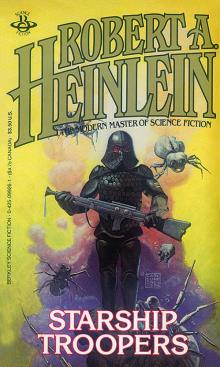 Starship Troopers
Starship Troopers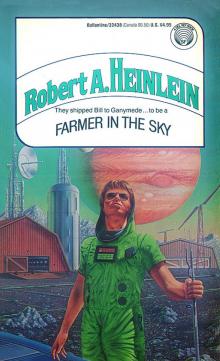 Farmer in the Sky
Farmer in the Sky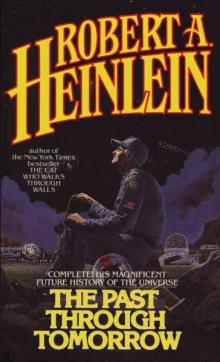 The Past Through Tomorrow
The Past Through Tomorrow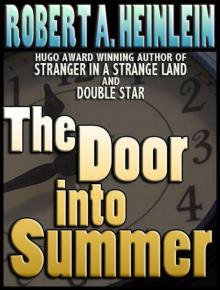 The Door Into Summer
The Door Into Summer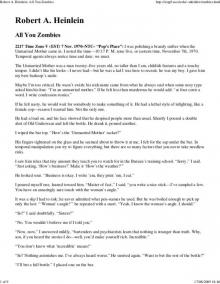 All You Zombies
All You Zombies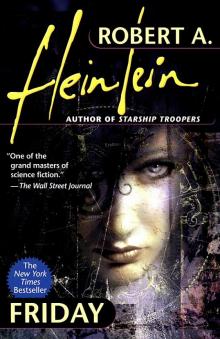 Friday
Friday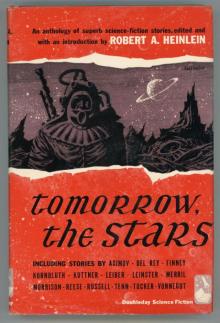 Tomorrow, the Stars
Tomorrow, the Stars The Notebooks of Lazarus Long
The Notebooks of Lazarus Long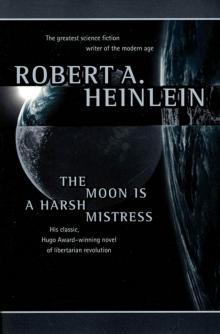 The Moon Is a Harsh Mistress
The Moon Is a Harsh Mistress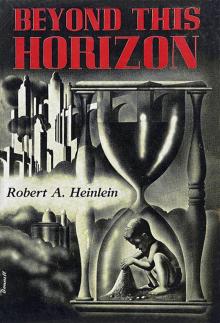 Beyond This Horizon
Beyond This Horizon Time Enough for Love
Time Enough for Love Tunnel in the Sky
Tunnel in the Sky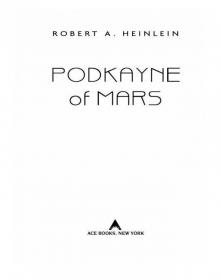 Podkayne of Mars
Podkayne of Mars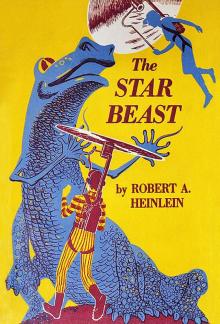 The Star Beast
The Star Beast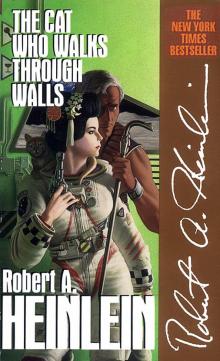 The Cat Who Walks Through Walls
The Cat Who Walks Through Walls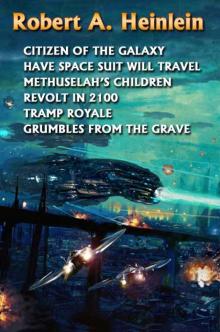 Grumbles From the Grave
Grumbles From the Grave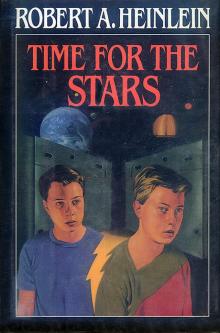 Time for the Stars
Time for the Stars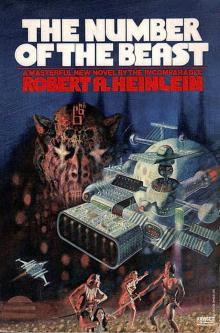 The Number of the Beast
The Number of the Beast The Unpleasant Profession of Jonathan Hoag
The Unpleasant Profession of Jonathan Hoag Sixth Column
Sixth Column To Sail Beyond the Sunset
To Sail Beyond the Sunset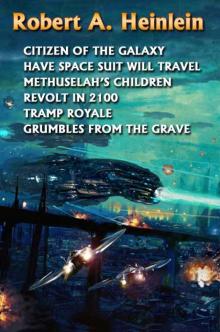 Revolt in 2100
Revolt in 2100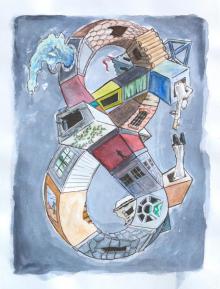 And He Built a Crooked House
And He Built a Crooked House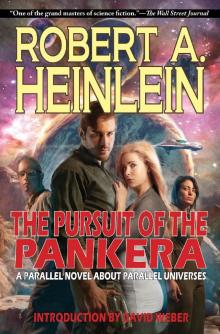 The Pursuit of the Pankera: A Parallel Novel About Parallel Universes
The Pursuit of the Pankera: A Parallel Novel About Parallel Universes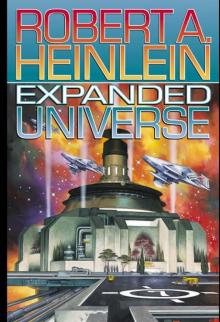 Expanded Universe
Expanded Universe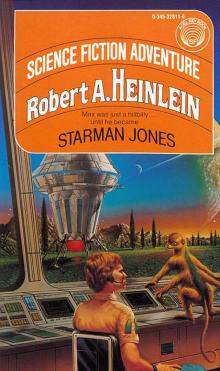 Starman Jones
Starman Jones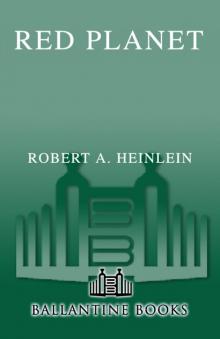 Red Planet
Red Planet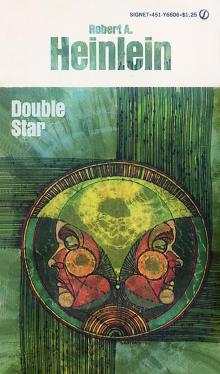 Double Star
Double Star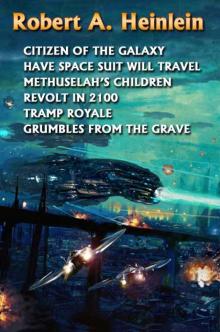 Citizen of the Galaxy
Citizen of the Galaxy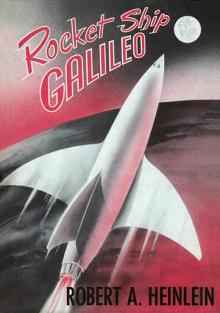 Rocket Ship Galileo
Rocket Ship Galileo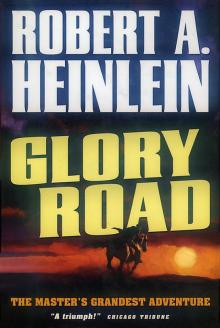 Glory Road
Glory Road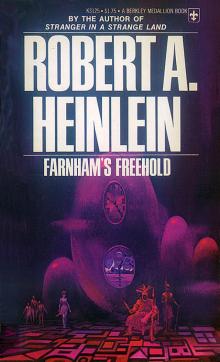 Farnham's Freehold
Farnham's Freehold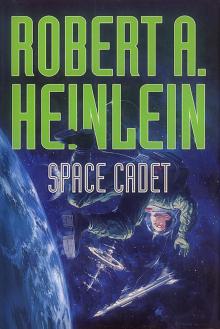 Space Cadet
Space Cadet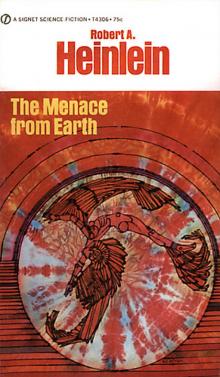 The Menace From Earth ssc
The Menace From Earth ssc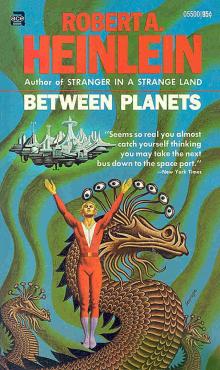 Between Planets
Between Planets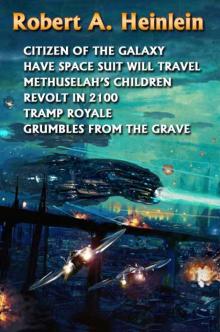 Methuselah's Children
Methuselah's Children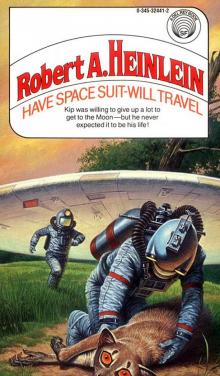 Have Space Suit—Will Travel
Have Space Suit—Will Travel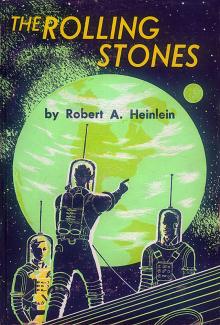 The Rolling Stones
The Rolling Stones Door Into Summer
Door Into Summer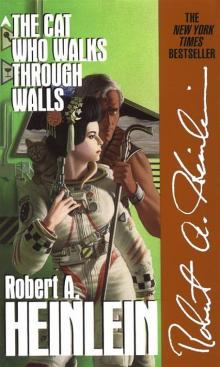 The Cat Who Walked Through Walls
The Cat Who Walked Through Walls Magic, Inc
Magic, Inc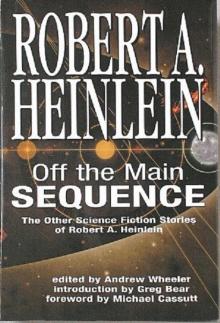 Off The Main Sequence
Off The Main Sequence Pied Piper
Pied Piper The Unpleasant Profession Of Jonathan Hoag And Other Stories
The Unpleasant Profession Of Jonathan Hoag And Other Stories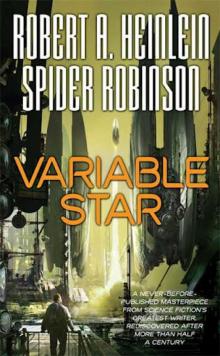 Variable Star
Variable Star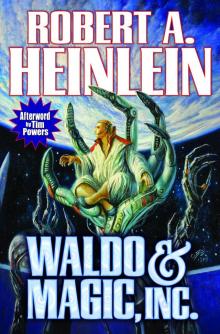 Waldo, and Magic, Inc
Waldo, and Magic, Inc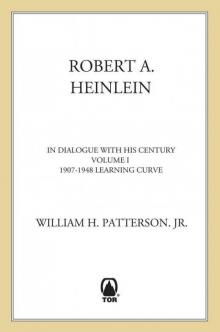 Robert A. Heinlein: In Dialogue With His Century
Robert A. Heinlein: In Dialogue With His Century Waldo
Waldo Bulletin Board
Bulletin Board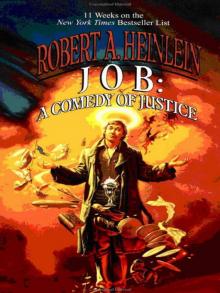 Job: A Comedy
Job: A Comedy Tramp Royale
Tramp Royale A Tenderfoot in Space
A Tenderfoot in Space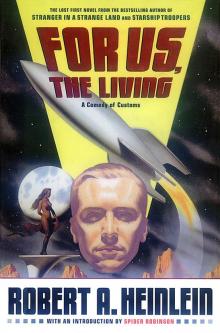 For Us, the Living
For Us, the Living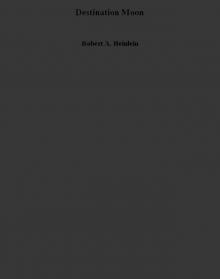 Destination Moon
Destination Moon Logic of Empire
Logic of Empire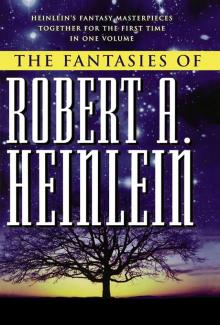 The Fantasies of Robert A. Heinlein
The Fantasies of Robert A. Heinlein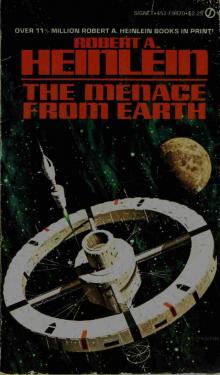 The Menace From Earth
The Menace From Earth From the Notebooks Of Lazarus Long
From the Notebooks Of Lazarus Long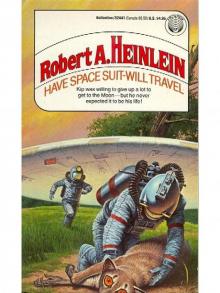 Have Space Suit - Will Travel
Have Space Suit - Will Travel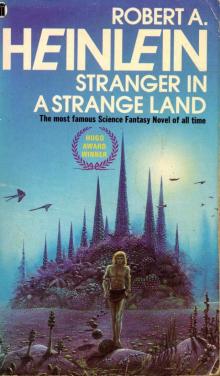 A Stranger in a Strange Land
A Stranger in a Strange Land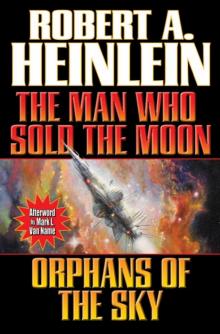 Man Who Sold the Moon / Orphans of the Sky
Man Who Sold the Moon / Orphans of the Sky